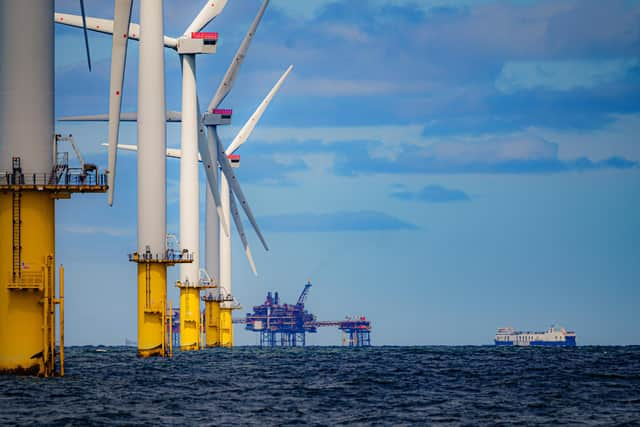The transition to renewables will require infrastructure such as wind turbines - Yorkshire Post Letters
The lively debate about onshore wind and new grid connections has reminded me that I had to write an English composition about pylons in school in the 1970s.
The general view was that everyone was going to say they were ugly and eyesores, but my teacher said we should consider writing in their favour and suggest a new way to look at them.
Advertisement
Hide AdAdvertisement
Hide AdThe electrification of Britain in the 20th century provided light and power and increased prosperity in every town, village and remote hamlet.


To achieve this, we built huge coal-fired stations in the Midlands and even in central London, and huge nuclear plants on our coasts. Then we built the National Grid to ensure it reached everyone.
People living near the power stations were not consulted before they were left in constant shade or had to suffer a steady rain of smuts and drizzle on their washing.
Coal stations emitted more radioactive pollution than nuclear ones. And there are a lot more spidery pylons close to the stations than towards the extremities of the grid.
Advertisement
Hide AdAdvertisement
Hide AdSince the start, the infrastructure needed for our electricity system has annoyed people.
The Campaign for the Protection of Rural England was even created to campaign against the old Meccano pylons.
So, it’s not surprising that shutting down the dirty, polluting coal stations, with their smuts and drizzle, acid rain and global warming emissions has been universally popular. Or why we have a lively debate about the new energy system.
The transition to renewables has drastically cut pollution, it has reduced our dependence on imported fossil fuels, and it is cutting the cost of energy.
Advertisement
Hide AdAdvertisement
Hide AdBut shutting the centralised plants and developing a new system with 55 gas plants, solar installations, and onshore wind all over the country and our world-beating fleet of offshore wind has moved the generation from the centre to the edge and turned the system inside out.
To make this transition we need to build new connections. Recognising the impact of the existing design, RIBA and National Grid ran a successful competition so the new pylons are slim and uncluttered. But we urgently need the new pylons.
We need to build clean renewables where they are most efficient and we need to connect everyone to reliable resilient power networks.
Why don’t we see this technology in the same light as we view the elegance of Concorde or the ambition of the Severn Bridge or the Pontcysyllte Aqueduct?
Advertisement
Hide AdAdvertisement
Hide AdEven Battersea Power Station and Tate Modern are now national treasures.
Are we just wrestling with the ‘shock of the new’?
I am certain that our grandchildren will find wind farms as normal as stone walls, TV aerials or the Severn Bridge, and will write essays about the ‘brilliant white blades of turbines, slowly turning against a clean blue sky’ or the ‘shadows of lines of pylons writing their messages across frosty hillsides’ in their classes of the future. And we will applaud them.
Comment Guidelines
National World encourages reader discussion on our stories. User feedback, insights and back-and-forth exchanges add a rich layer of context to reporting. Please review our Community Guidelines before commenting.
